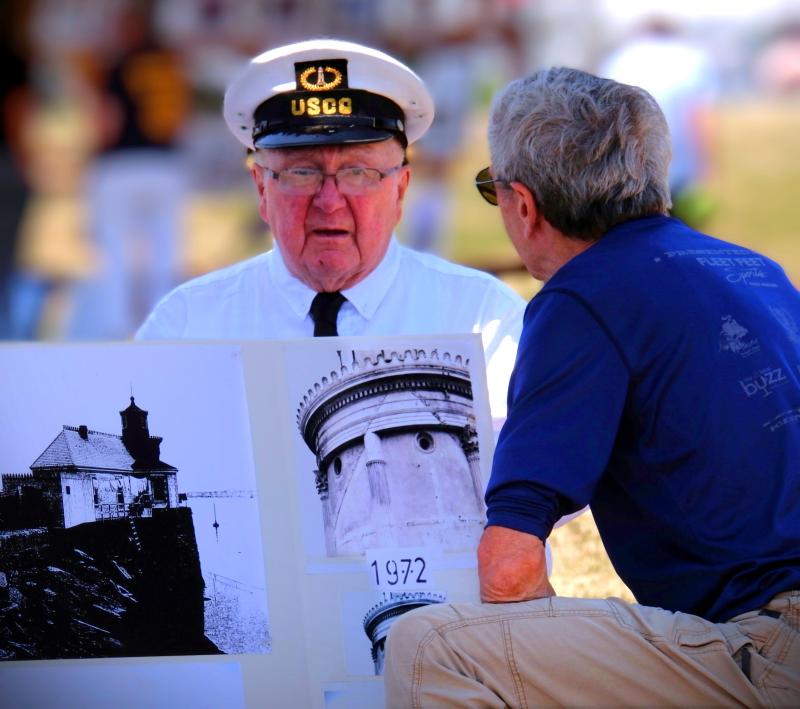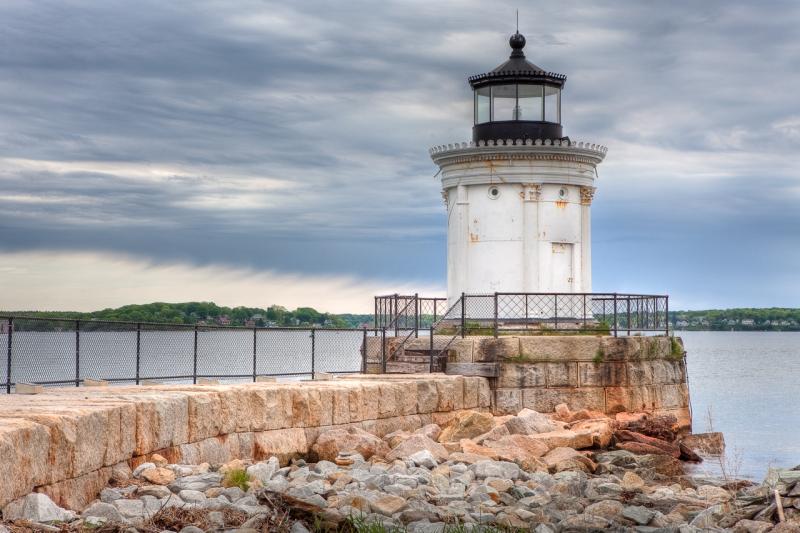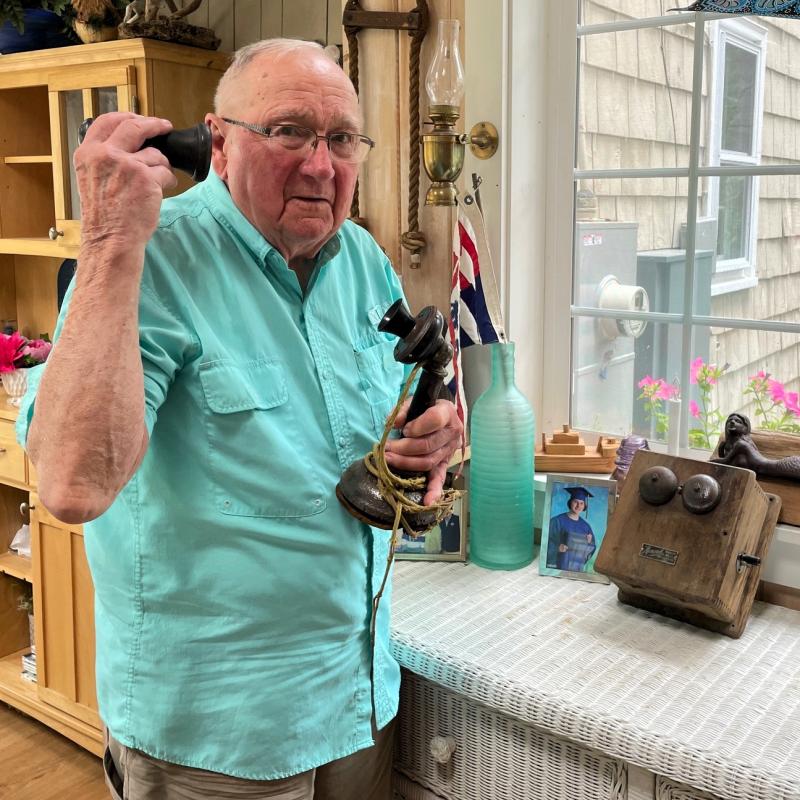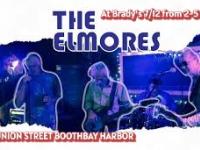Howard Wright shines a light on South Portland history
Howard Wright carried his tools across the breakwater in the earliest hours of daylight.
He cranked his hand drill into the lighthouse door. Two holes on top, another on the bottom, then a fourth. Clang! The lock securing Portland Breakwater Lighthouse, or Bug Light, fell to the ground. After months of effort, he was in. Wright had signed a contract with General Electric, the then-owners of Bug Light, to enter and begin restoration. GE gave him permission in the summer of 1972, and the ink was hardly dry when he began his work. At the time, the lighthouse had been abandoned and boarded up against the weather.
“By the time I finished that fourth hole, that lock just dropped right out. I hooked that finger and opened that door. What a mess. Stones and glass all over the place. I couldn't even start to climb the little short spiral stairs to the lantern room because they were all covered in stones and glass,” said Wright, now a Boothbay resident.
Fast forward to today, and Bug Light has been restored. The 24-foot-tall structure is reminiscent of an ancient Greek monument, so named because it is cute as a bug. It's also part of a public park.
This summer, the City of South Portland and the Rotary Club of South Portland-Cape Elizabeth held a celebration in honor of its 150th year, and Wright was invited in recognition of his efforts and connection with the lighthouse. He brought memorabilia and posters and was invited to give a speech.
“Until we met Howie, the '70s were pretty much forgotten as far as the history of Bug Light. That was a period of time where we didn't know what had gone on. And so he played a really big part in filling in that story,” said Sue Sturtevant, chair of the celebration’s organizing committee.
Finished in 1875, Bug Light was lit by kerosene for decades. In 1934, the lighthouse was electrified. However, Spring Point Ledge Lighthouse was built a few years later, and a keeper could flip a switch to turn Bug Light on. The modernization made two keepers redundant, and it was discontinued in 1942.
In the meantime, the adjacent South Portland Shipping Company West Yard shipyard was bustling, building Liberty Ships for World War II. During the war, metal was in high demand. Wright said the lighthouse, and even the railings on the breakwater leading to it, were salvaged for materials. However, when the war was over, both the shipyard and lighthouse went dim.
“It became a really ghost yard. Big cranes just standing there. But it was a heaven for vandals,” Wright said. "They loved to smash glass, and they loved the ripped doors off of hinges and things ... That's when they started breaking out windows, and they broke out all the glass in the lantern room of Bug."
Bug Light held a special place in Wright’s heart. He first saw it when he was 5. Now 96, he remembers spending cherished summers on neighboring Peak’s Island watching it shine. His great-grandfather owned what is now South Portland Historical Society's headquarters, located at Bug Light Park.
Wright also has a passion for restoration. He said, over his lifetime, he has been reviving lost or vandalized historical places around Philadelphia and Seaport, Connecticut. “I had developed an emotional attachment to historical places and to the restoration of them. Some people like cars and airplanes. I just like the history of old and the craftsmanship that went into it and the architecture and everything.”
However, Wright’s personal Bug Light project was short-lived. In the summer of 1971, he worked around the area, bothered by the state of the lighthouse in the skyline. He did some research and discovered that General Electric owned it, something he said they didn't even realize. He approached the plant manager about permission to restore it. The request was sent up the corporate ladder and, after some persitance, he was approved.
Wright put his own lock on the door, and he was the only one with the keys. That summer, he was the King of the Lighthouse.
“I made all kinds of plans for the summer of '73, what I was going to do: scrape, paint, put glass back in,” he said. "I was going to prefab a metal railing in sections, bring it up, and have a welder tack it back on again. Well, best laid plans. Sometime late fall or early winter, I get a call from the plant manager ... ‘Well, thanks, Howie, but we're going to take over.’”
Wright said he ceded the project to GE per the contract. Around 1973, GE finished its restoration as a gift to the South Portland community, which Wright called “a beautiful job.” However, GE eventually moved to Bangor, and the lighthouse was abandoned again until around 2009 when the Rotary Club and city took over.
"It's a navigational aid that helps all the ships going into Portland Harbor," Sturtevant said. "It's just reassuring to know that that lighthouse is gleaming at night when it needs to be. And it really protects people from going into the ledges along that particular cove."
However, Wright kept more than memories from the project. While he was cleaning out the building, he found an antique Monarch telephone, buried in the rubble. Like an archeologist, he carefully removed stone, glass and debris piece by piece to store it for safe keeping.
The phone wound up being perhaps a consolation project in lieu of the lighthouse. Over the years, he repaired the warped wooden case and, when invited to the 150th celebration, decided he should finish the job. He looked for parts from Canada, California, Oregon, Arizona and Wisconsin, where he eventually found what was needed.
The phone and Wright’s stories made it to the celebration, along with wife Dee and granddaughter Elisabeth. But, when it came time for his speech, maybe it wasn't as short as intended.
“How do I squeeze 91 years in three minutes? Well, maybe I went a little bit over three minutes. But that was a real thrill for me and a real honor.”
Bug Light photo by Roger H. Goun available under Creative Commons Attribution 2.0 Generic license.



































